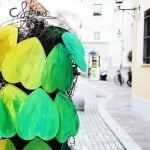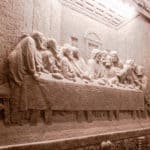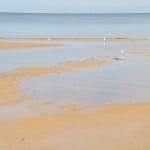Make time for Slovakia’s capital city and you’ll be rewarded with history, design and a dose of whimsy. Here’s why Bratislava is worth visiting.
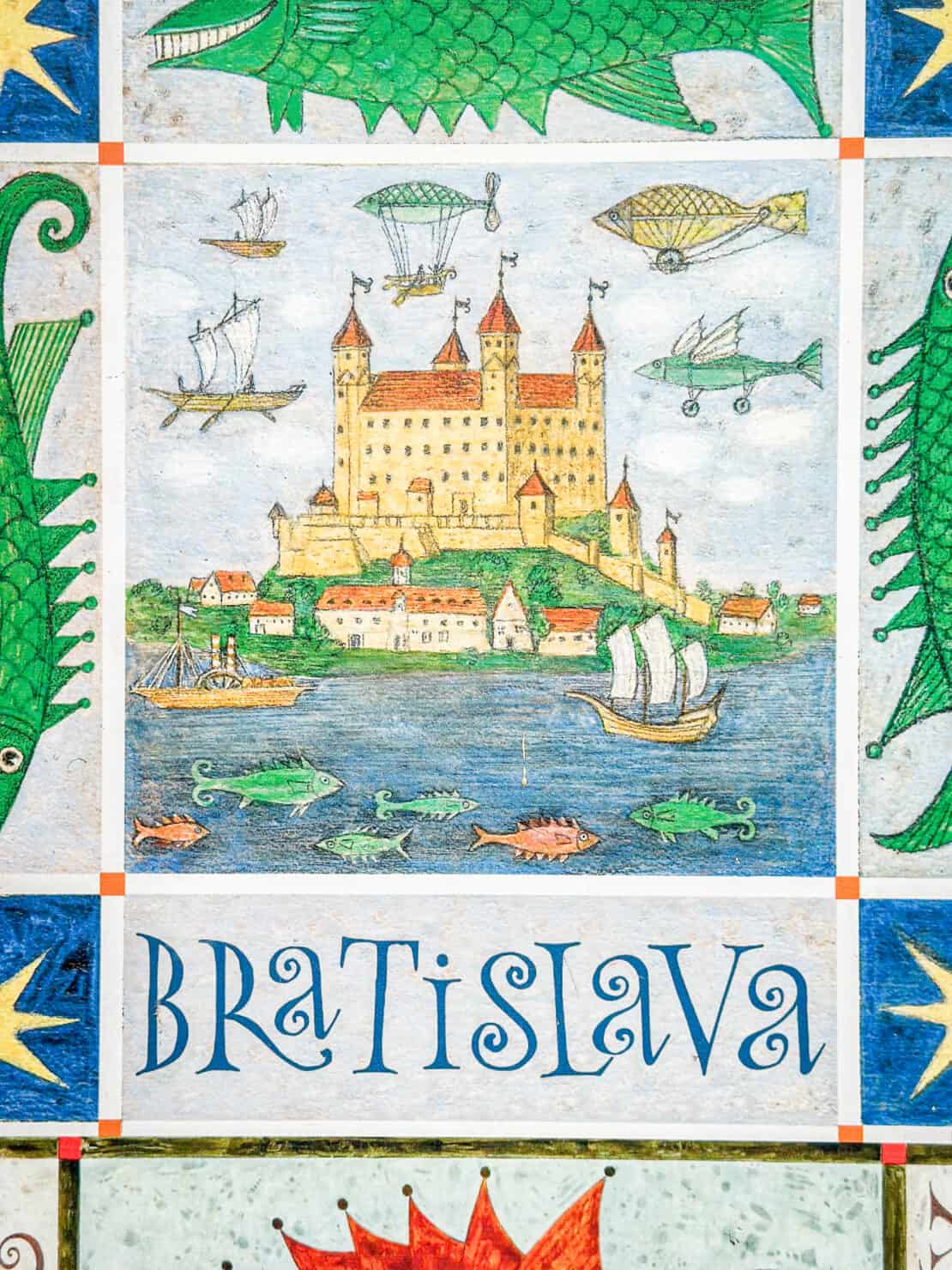
Why Visit Bratislava
Bratislava, the capital of Slovakia, often flies under the radar compared to its more famous neighbours like Vienna and Budapest.
I first visited on a stopover on a Viking Danube River Cruise from Budapest to Passau.
One of the reasons I chose this route was to experience smaller cities like this and to be able to explore.
Viking provide complimentary walking tours in each port, which are a great way to get your bearings in a new place before you have free time to explore in more depth.
But, of course, you don’t need to see Bratislava this way. You can just explore the city under your own steam.
Disclosure: if you book or buy through any of the links on this page, we may earn a small commission at no extra cost to you.
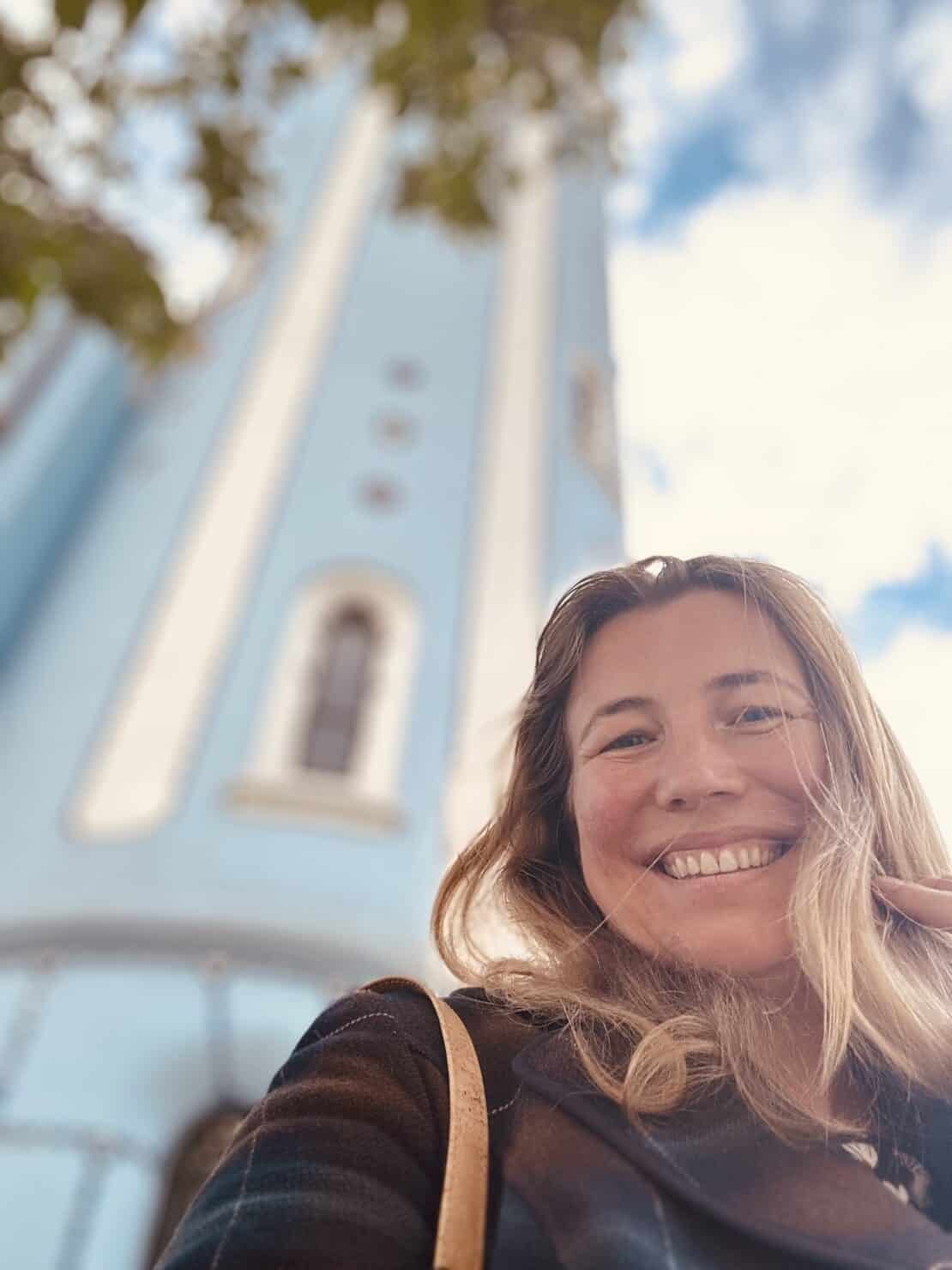
First Impressions of Bratislava
And what did I find? Bratislava combines pretty pastel facades and cobbled streets with a history of grit, determination and good humour.
Here’s a look at why Bratislava is worth visiting, along with practical information on getting there, getting around, and making the most of your trip.
But a quick note. While I definitely believe that Bratislava is worth visiting in its own right, I wouldn’t recommend making a day trip from Vienna to do so unless you have lots of time to do Vienna justice.
Savour Vienna. And then make other plans to come and savour the smaller city of Bratislava.
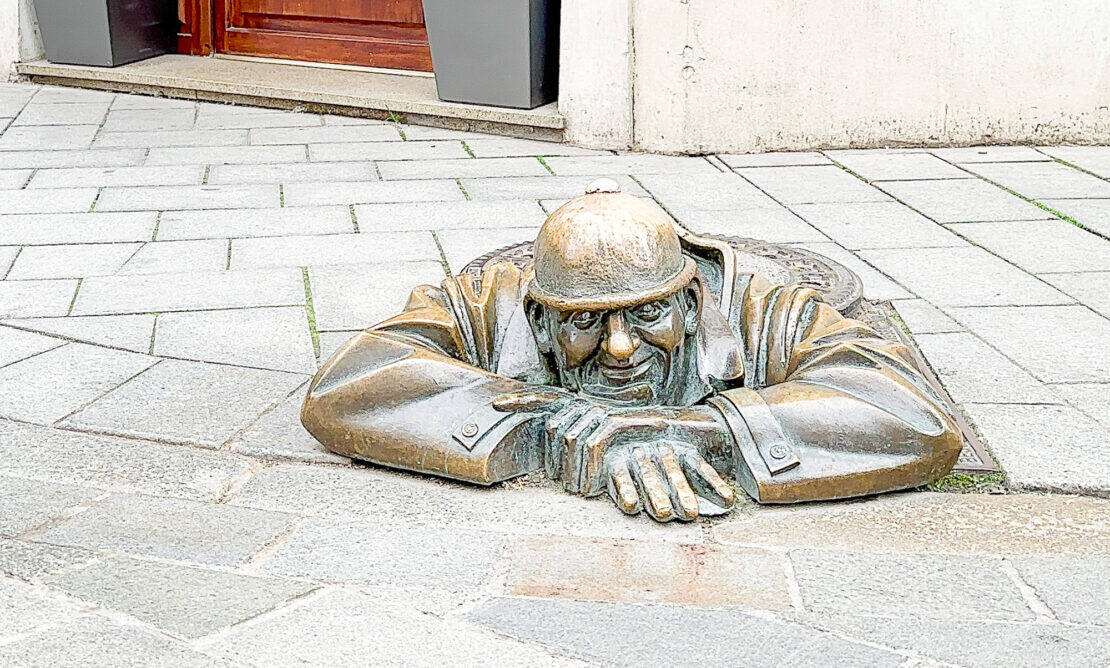
Is Bratislava Worth Visiting?
Is Bratislava worth visiting? In short, yes. Visit her for the art, the food, the architecture, the history…and as a sign of respect to Slovakia and the man in the drain cover.
Bratislava’s Highlights and Attractions
Bratislava Castle
Perched high above the city, Bratislava Castle is one of the most iconic landmarks in the city. The castle, originally constructed in the 9th century, has undergone various reconstructions, with its current Baroque style dating back to the 18th century. It offers spectacular panoramic views of the Danube River and the city below.
Within its walls, you’ll find the Slovak National Museum, which houses a vast array of historical and cultural artefacts. Don’t miss the Crown Tower, from where you can enjoy the best views of Bratislava, stretching all the way to Austria and Hungary on clear days.
Inside Tip: Visit the castle at sunset for a view of the city bathed in golden light.
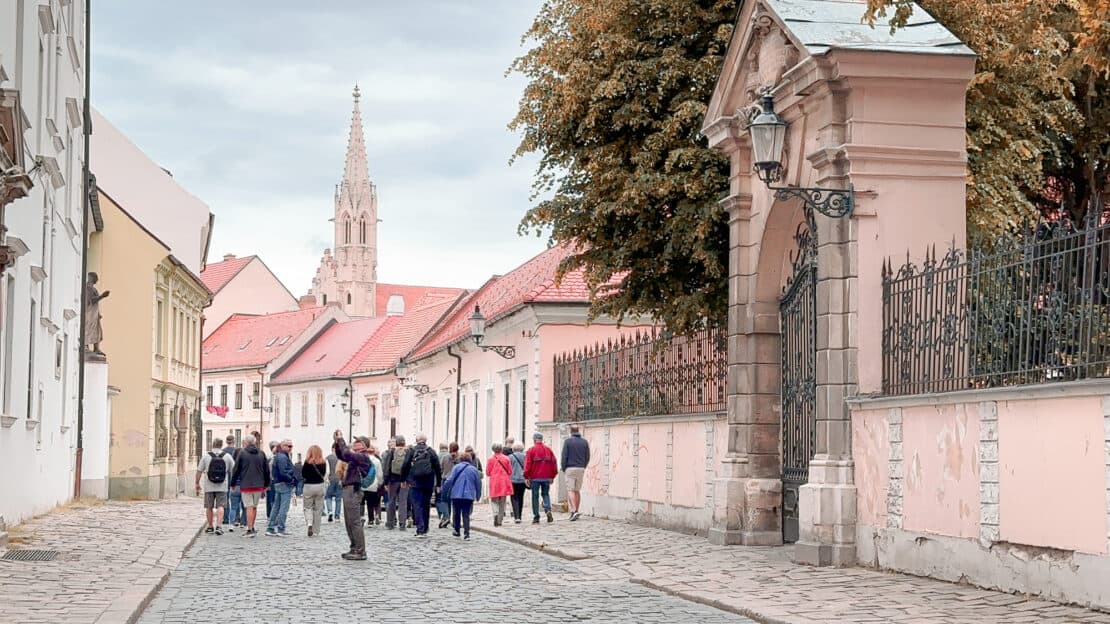
Old Town (Staré Mesto)
Bratislava’s Old Town is a labyrinth of narrow, medieval streets lined with pastel-coloured buildings. It’s a delightful area to wander around, with charming squares, quaint cafes, and numerous historical landmarks.
Key sites include Michael’s Gate, the only preserved gate of the city’s medieval fortifications, and the Old Town Hall, which dates back to the 14th century and now hosts the Bratislava City Museum. This area is also home to the Primate’s Palace, renowned for its Hall of Mirrors and collection of English tapestries.
Inside Tip: Take a guided walking tour to uncover hidden courtyards and learn about the legends and history of the Old Town.
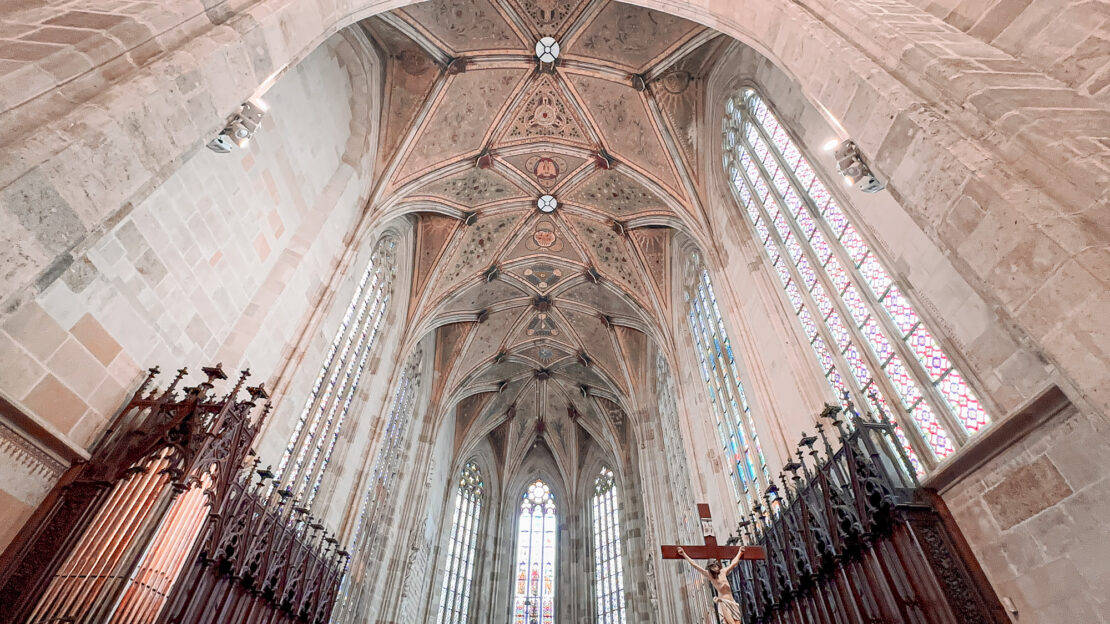
St. Martin’s Cathedral
St. Martin’s Cathedral, a stunning Gothic church, has been a significant religious site since its consecration in 1452. It served as the coronation church for Hungarian kings and queens from 1563 to 1830, drawing in the Empire’s great and good to this small city.
The cathedral’s interior is just as impressive as its exterior, featuring beautiful stained-glass windows and a stunning baroque altar. Beneath the cathedral lies an underground crypt, where many notable figures are buried.
Inside Tip: Attend a classical music concert here to experience the cathedral’s incredible acoustics.
Devin Castle
A short drive from the city centre, Devin Castle is perched on a cliff above the confluence of the Danube and Morava rivers. This site has been inhabited since the Iron Age, and its ruins offer a glimpse into Slovakia’s rich past. The castle played a crucial role in the Great Moravian Empire and later as a strategic military fort.
Today, it’s a peaceful place to explore, with well-preserved ruins and informative displays about its history.
Inside Tip: Visit in spring or summer when the surrounding nature is in full bloom, and take a leisurely hike up to the castle for magnificent views.
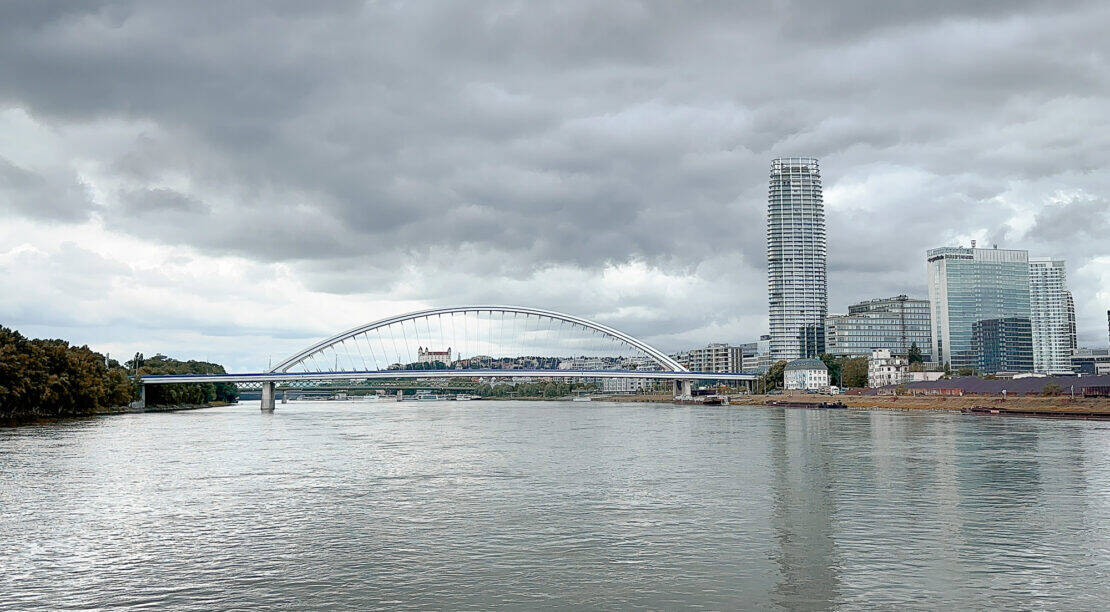
UFO Observation Deck
For a modern contrast to Bratislava’s historical sites, head to the UFO Observation Deck atop the SNP Bridge.
Opened in 1972, this distinctive structure offers stunning 360-degree views of the city and the surrounding area. At a height of 95 metres, it’s one of the best spots for panoramic photography. There’s also a chic restaurant where you can dine with a view, offering both local and international cuisine.
Inside Tip: Go in the evening to enjoy a meal as the city lights up, creating a magical atmosphere.
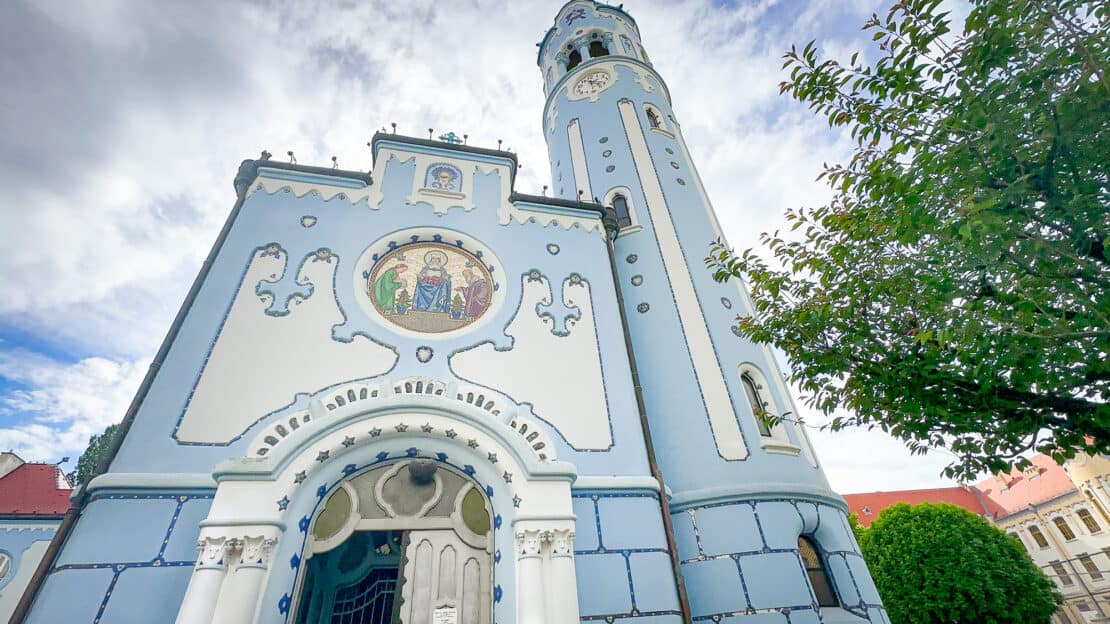
The Blue Church (St. Elizabeth’s Church)
The Blue Church, officially known as St. Elizabeth’s Church, stands out with its distinctive sky-blue façade and intricate details. Built between 1909 and 1913, this Art Nouveau masterpiece was designed by Hungarian architect Ödön Lechner. The church’s exterior features delicate mosaics and glazed tiles, giving it a fairy-tale appearance.
Inside, the pastel blue theme continues, although the rest of the decorations appear more traditional.
Inside Tip: Visit early in the morning or late in the afternoon to avoid crowds and fully appreciate the church’s tranquil beauty. Don’t forget your camera – this is one of Bratislava’s most photogenic spots!
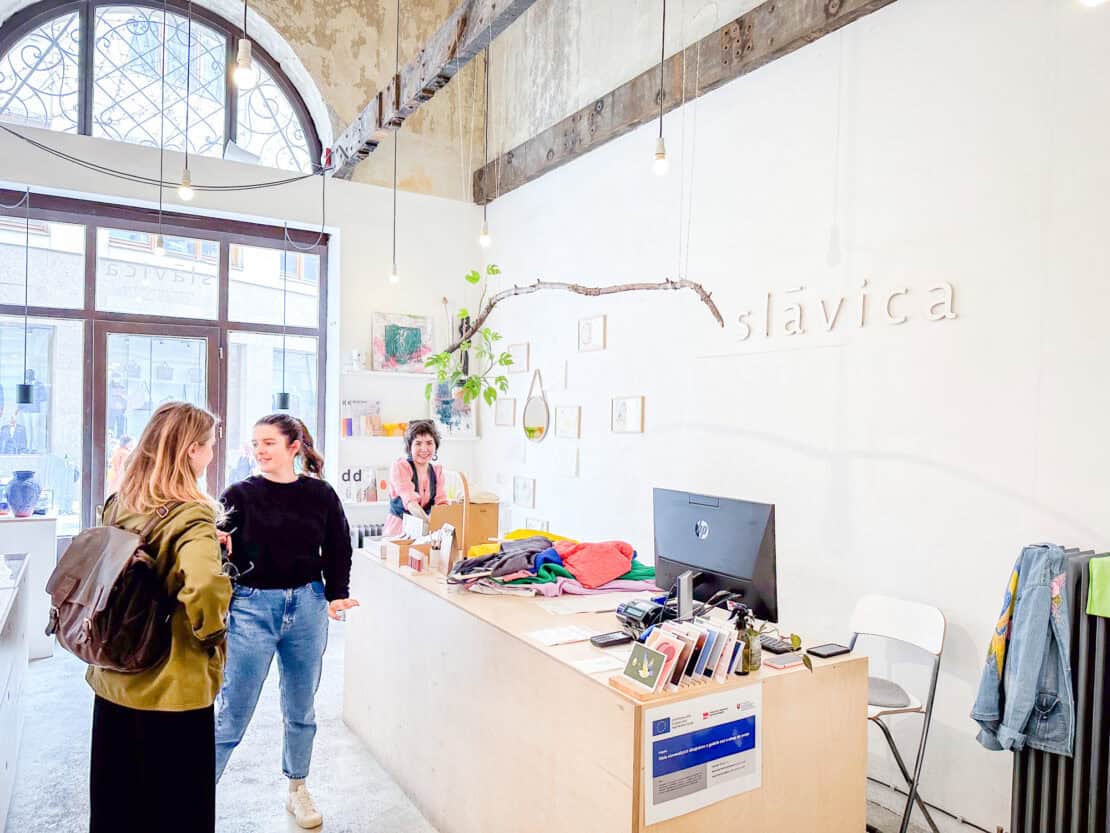
Slavica Design Shop
And finally, I love this little place with its emphasis on local art and design. All bright, white and airy, the staff also speak excellent English and can talk you through the work of the designers they have on display.
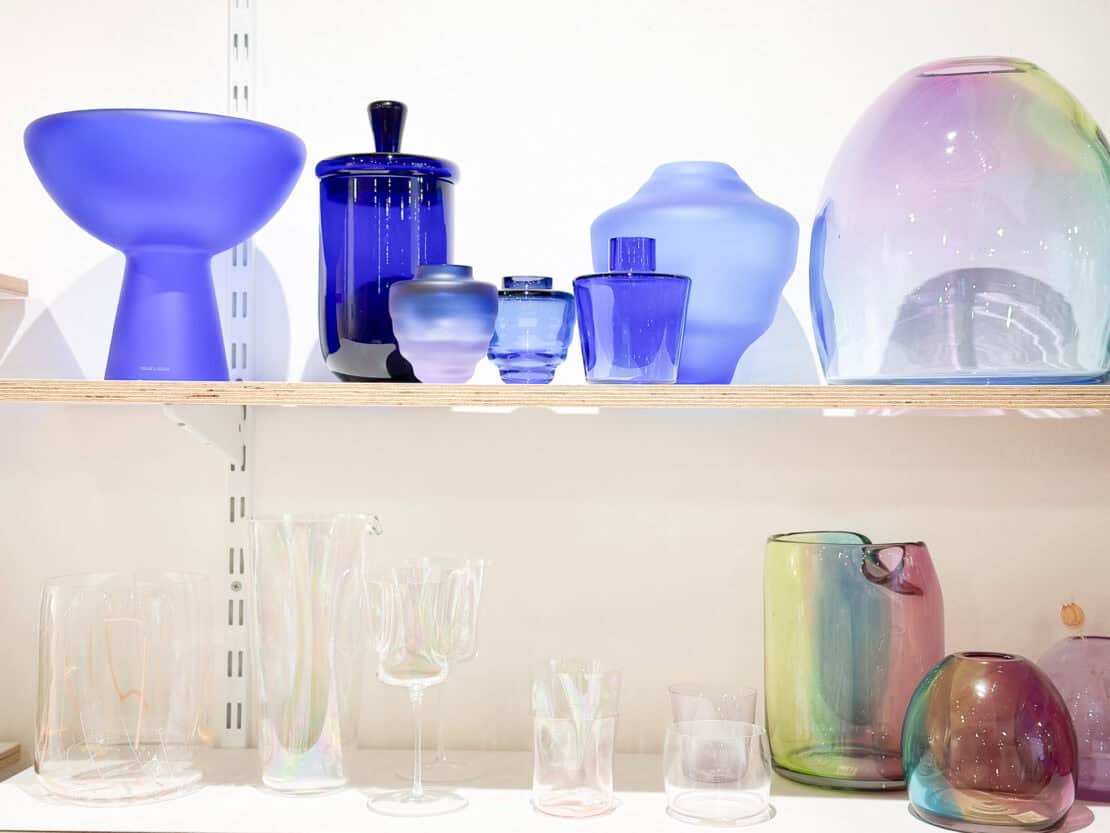
The Practicalities
How Do I Get to Bratislava?
Bratislava is accessible by air, train, and bus:
- By Air: Bratislava Airport (BTS) is well-connected with flights from various European cities. Alternatively, Vienna International Airport is just 60 km away, with frequent bus and train connections to Bratislava.
- By Train: Regular trains connect Bratislava with Vienna, Budapest, and Prague, making it easy to include in a Central European itinerary.
- Along the Danube: River cruises from Vienna or Budapest often pass by.
- By Bus: Budget-friendly bus services like FlixBus and RegioJet offer routes to Bratislava from many European cities.
How Long Should I Go For?
A two to three-day visit is ideal for exploring Bratislava’s main attractions. This timeframe allows for leisurely exploration of the Old Town, visits to the castles, and enjoying local cuisine without feeling rushed. That said, if you only have one day as part of a river cruise, there’s a lot you can do.
When is the Best Time to Visit?
- Spring (April to June): Mild weather and fewer tourists make this a great time to visit.
- Autumn (September to October): Similar to spring, with pleasant weather and vibrant fall colors.
- Summer (July to August): Warm and bustling with tourists, offering numerous festivals and outdoor activities.
- Winter (December to February): Cold, but the city’s Christmas markets and festive atmosphere can be charming.
How Do I Get Around?
Bratislava’s compact size makes it easy to navigate:
- On Foot: Many of the city’s attractions are within walking distance of each other, especially in the Old Town.
- Public Transport: Efficient trams, buses, and trolleybuses cover the city. A single ticket costs around €1.20 and is valid for 60 minutes.
- Bikes and Scooters: Rental services for bicycles and electric scooters are widely available for convenient, eco-friendly travel.
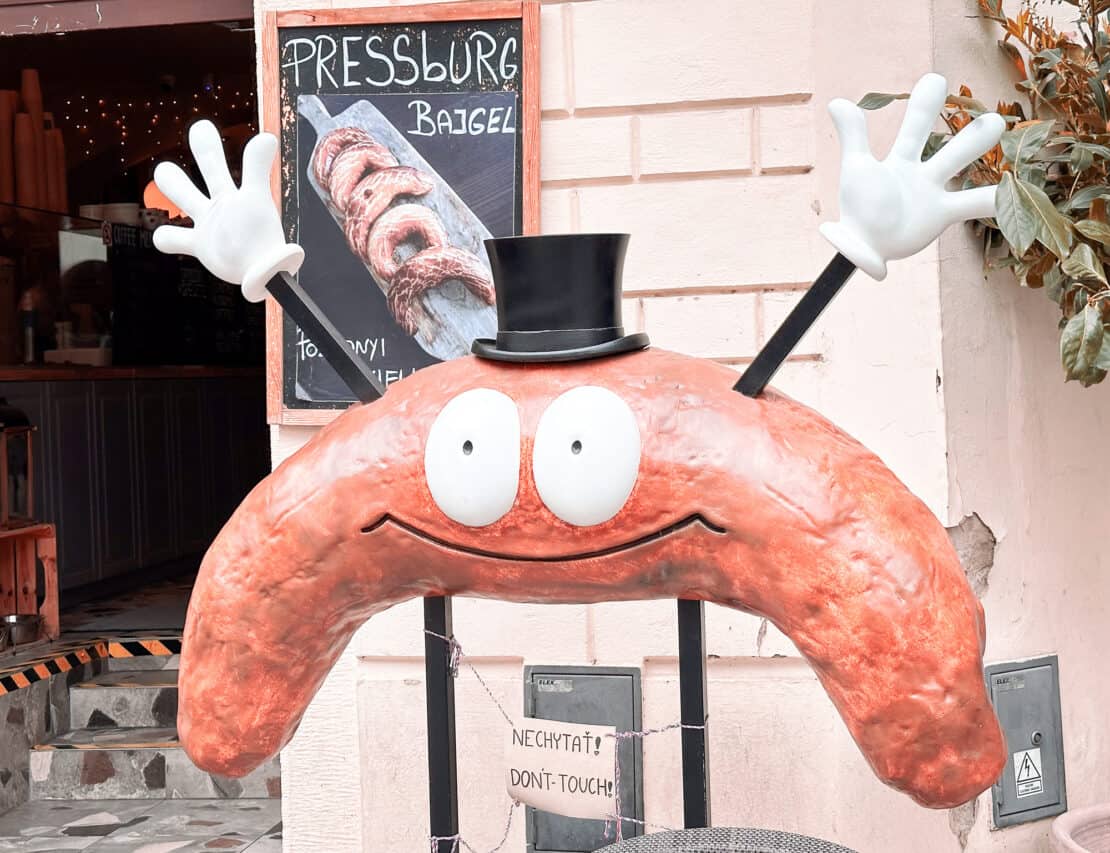
What Should I Eat in Bratislava?
Bratislava’s culinary scene is a delightful mix of traditional Slovak dishes and international flavours. Here’s a guide to some must-try foods and where to find them:
Traditional Slovak Cuisine
Bryndzové Halušky: This is Slovakia’s national dish, consisting of potato dumplings mixed with a creamy sheep cheese called bryndza and topped with crispy bacon. It’s a hearty and comforting meal perfect for colder days.
Where To Try It: Check out the cozy Slovak Pub, renowned for its authentic Slovak cuisine and rustic atmosphere.
Kapustnica: This rich and savoury sauerkraut soup, often made with smoked sausage and dried mushrooms, is a staple during the winter months and festive seasons.
Where to Try It: Enjoy a bowl at Modrá Hviezda, a charming restaurant located at the foot of Bratislava Castle.
Zemiakové Placky: These crispy potato pancakes, often served with garlic and accompanied by a dollop of sour cream, make for a delicious snack or side dish.
Where to Try It: Visit Prašná Bašta, a historic restaurant in the Old Town with a lovely outdoor terrace.
Modern and International Cuisine
Bistro Soho: For a taste of Asian fusion, Bistro Soho offers a range of dishes from Vietnamese pho to Thai curries, all in a modern and stylish setting.
Fach: This contemporary bistro and bakery provides a variety of healthy, gourmet dishes, perfect for breakfast or lunch. Their artisanal coffee and fresh pastries are also highly recommended.
Savoy Restaurant: Located in the elegant Radisson Blu Carlton Hotel, Savoy offers a sophisticated dining experience with a menu that blends local ingredients with international culinary techniques.
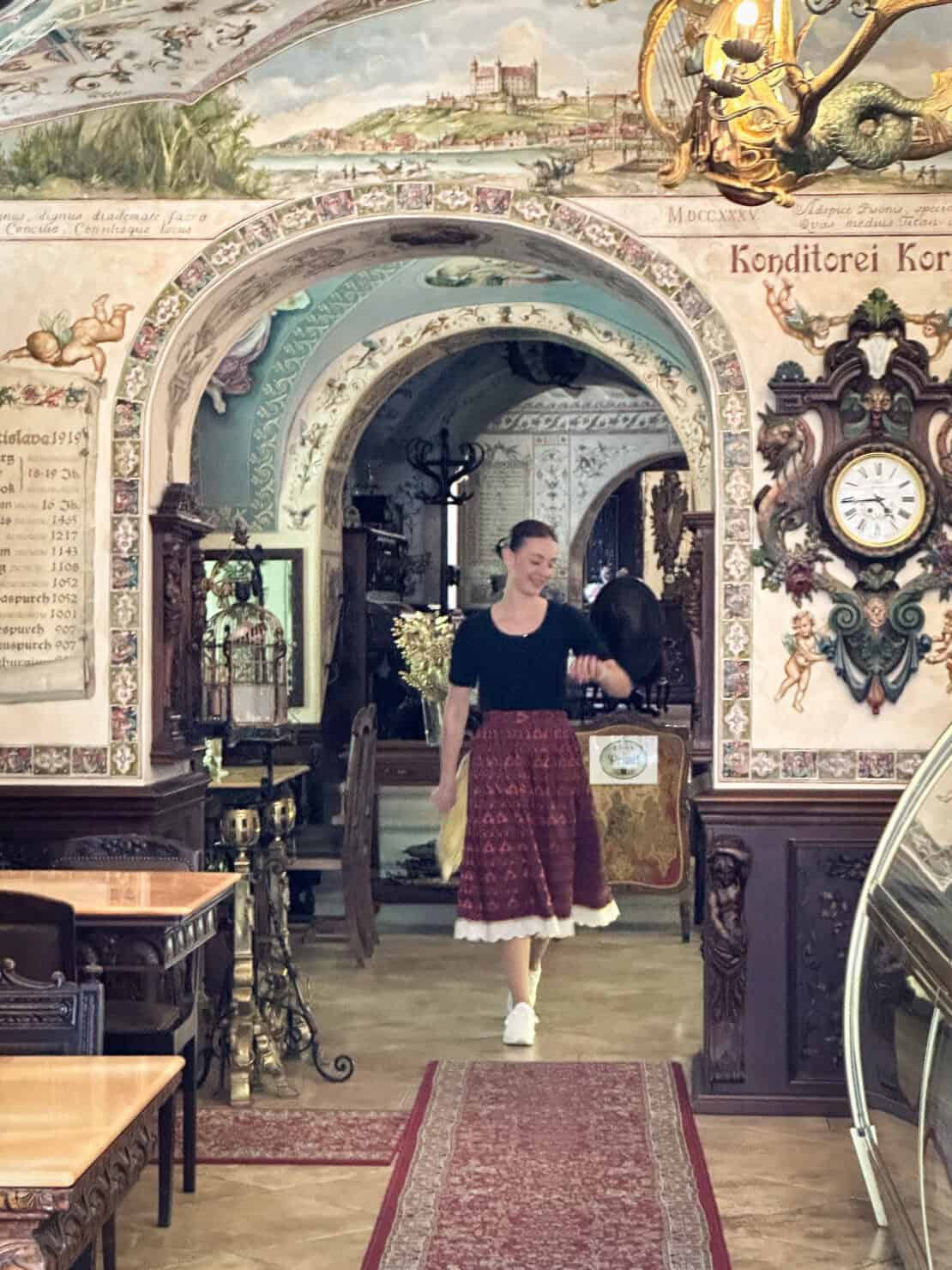
Where Should I Stay in Bratislava?
Honestly, I really enjoyed gliding into town on my Viking River Cruise along the Danube and popping into Konditorei Kormuch for a traditional snack. But if you’re staying in town then Bratislava offers a range of accommodation options to suit different budgets and preferences. Here are some recommendations:
Luxury Hotels
- Grand Hotel River Park: Situated along the Danube River, the five-star Grand Hotel River Park offers luxurious rooms with stunning views, a top-notch wellness centre, and an elegant restaurant. It’s perfect for those seeking a high-end experience.
- Marrol’s Boutique Hotel: This boutique hotel in the heart of Bratislava combines historic charm with modern comforts. Guests appreciate its stylish rooms, attentive service, and the inviting Jasmine Spa.
Mid-Range Hotels
- Hotel Devin: Located by the river, Hotel Devin offers comfortable rooms, a wellness centre, and an excellent breakfast buffet. It’s a great choice for those wanting good value and a central location.
- LOFT Hotel Bratislava: This trendy hotel features chic, industrial-style rooms and its own microbrewery. The hotel’s Fabrika The Beer Pub is popular for its great food and craft beers.
Budget Accommodation
- Patio Hostel: Ideal for budget travellers, Patio Hostel provides clean, affordable dorms and private rooms. Its central location makes it easy to explore the city’s attractions on foot.
- Hostel Blues: Known for its friendly atmosphere and regular live music events, Hostel Blues offers both dormitory and private room options. It’s a vibrant place to meet fellow travellers.
- Visiting nearby Vienna in the same trip? Don’t miss out guide to traditional dishes in Austria.
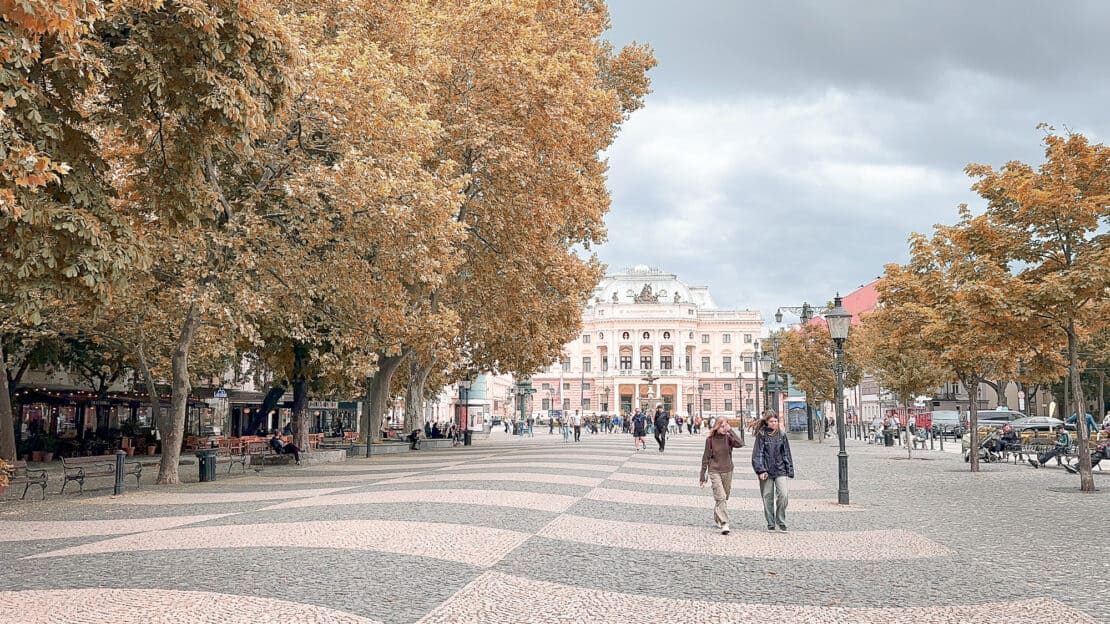
Is the Bratislava Card Worth it?
Under certain circumstances, the Bratislava Card is an excellent investment. This all-in-one city card offers numerous benefits that can help you save money and experience the best of what the city has to offer. But that only applies if you’re the kind of person who wants to fly around and see everything at once.
Benefits of the Bratislava Card
- Free Public Transport: With the Bratislava Card, you can travel for free on all public transport within the city, including buses, trams, and trolleybuses. This makes it easy and cost-effective to explore different parts of Bratislava without worrying about purchasing individual tickets.
- Free Guided Tours: The card includes a complimentary guided walking tour of the Old Town, providing an insightful introduction to Bratislava’s history, architecture, and culture. Tours are typically available in multiple languages, including English.
- Free and Discounted Admission to Attractions: Holders of the Bratislava Card enjoy free entry to several key attractions, such as the Bratislava City Museum, the Apponyi Palace, and the Slovak National Museum. Additionally, the card offers discounts on admission to other popular sites, including the UFO Observation Deck and Devin Castle.
- Discounts at Restaurants and Shops: The card provides various discounts at selected restaurants, cafes, and shops around the city.
- Excursions and Day Trips: You can also benefit from discounts on guided excursions and day trips to nearby attractions, allowing you to explore the region beyond Bratislava at a lower cost.
Types and Pricing
The Bratislava Card is available in three types, depending on the duration of your stay:
- 24-hour card: Perfect for a short visit, this card offers a full day of benefits.
- 48-hour card: Ideal for a weekend trip, providing two days to explore the city.
- 72-hour card: Best for a longer stay, giving you three days to make the most of Bratislava.
Prices are reasonable and vary based on the card duration, with special discounts available for families, students, and seniors.
Where to Purchase
You can purchase the Bratislava Card online, at tourist information centres, major hotels, and various points of sale around the city, including the airport and train station.
Inside Tip: Buy your Bratislava Card as soon as you arrive to maximise the benefits throughout your stay. Make sure to check the official Bratislava Card website or ask at a tourist information centre for the latest list of participating attractions and partners, as these can change.
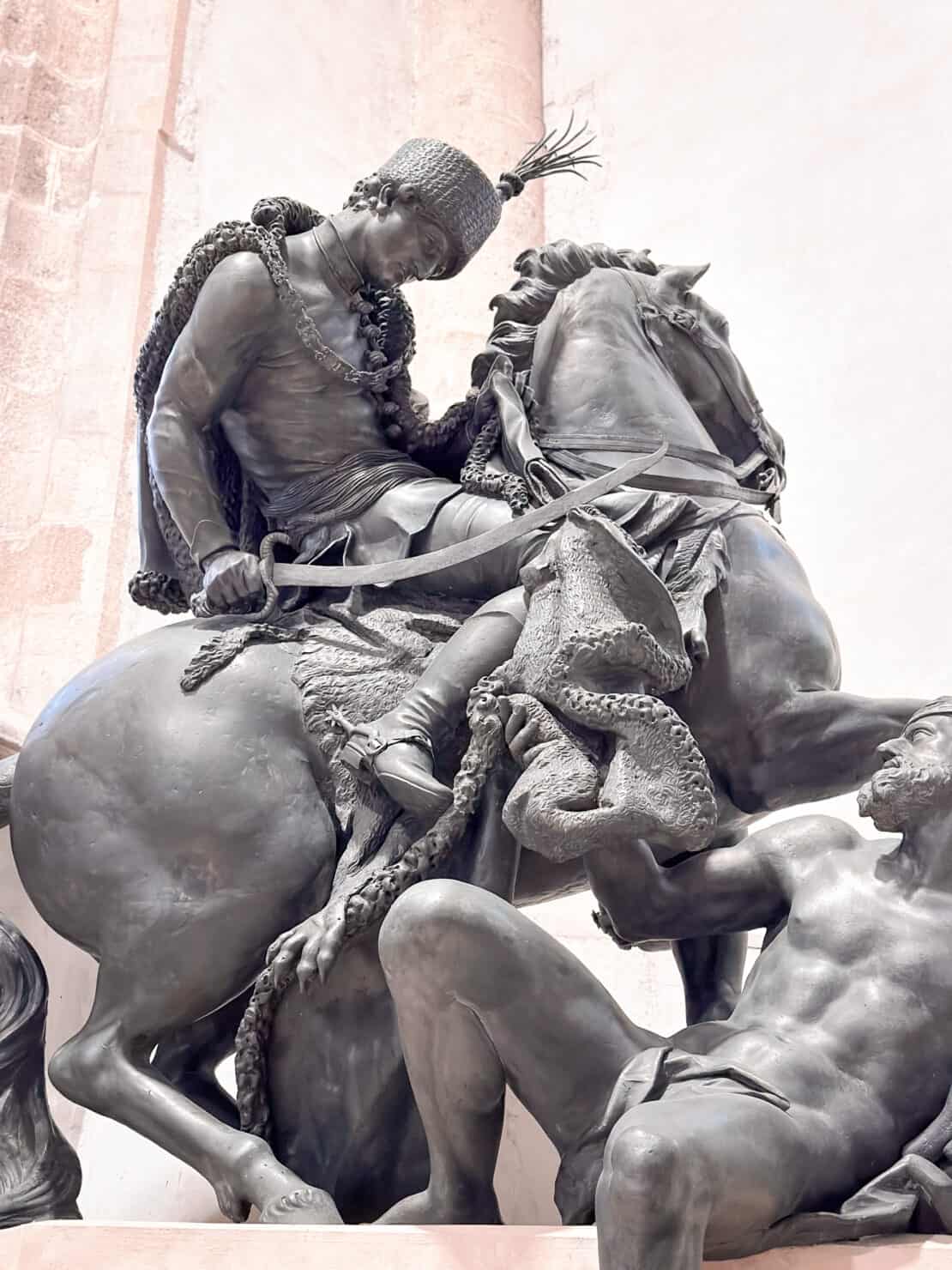
Fun Facts About Bratislava
- Border City: Bratislava is the only capital city in the world that borders two countries: Austria and Hungary.
- Historical Name: The city was known as Pressburg until 1919.
- Twin City: It shares close ties with Vienna, only 80 km away, making them the two closest national capitals in Europe.
- UFO Bridge: The SNP Bridge, with its unique UFO-shaped structure, is a symbol of the city and a nod to 20th-century futuristic architecture.
- Wine Tradition: Bratislava has a long winemaking tradition, with vineyards just outside the city offering wine tours and tastings.
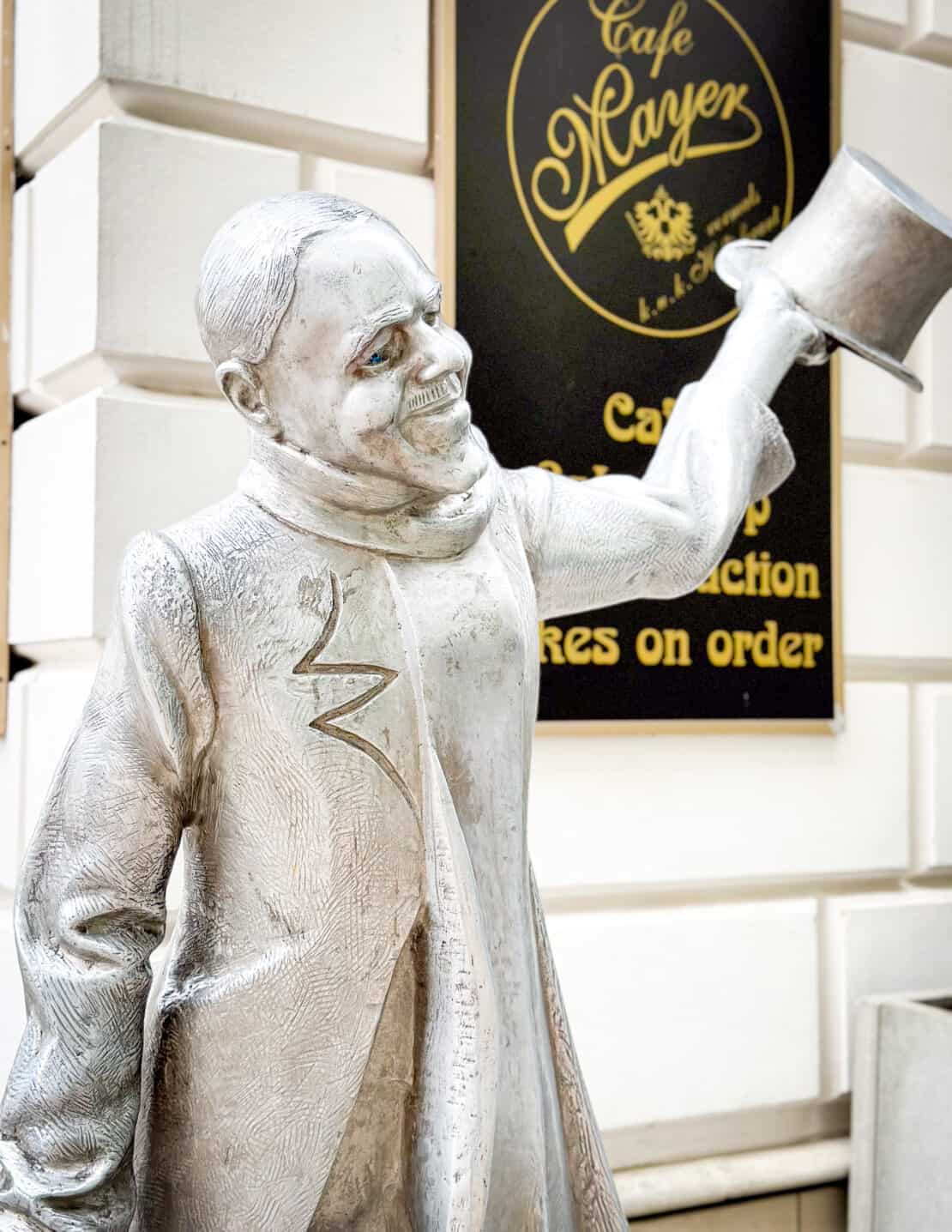
Top Tips For Bratislava
If this is your first visit to this small city, it’s a good idea to make note of the following.
- Slovakia is considered part of Central Europe rather than part of Eastern Europe. This matters to locals.
- One of the best things to do is to take a free walking tour to get your bearings.
- Bratislava is much smaller than nearby European capitals like Budapest and Vienna. Bear that in mind when planning your itinerary.
- Look out for the sculpture of Schöne Náci. This statue of a smiling gentleman greeting people in the Main Square is based on real-life Bratislava resident Ignác Lamár and is considered a local icon.
- The Church of St Elizabeth is the perfect place for a photo stop. Just saying.
- The Main Square is the best place for people watching and drinking coffee.
Happy travels!
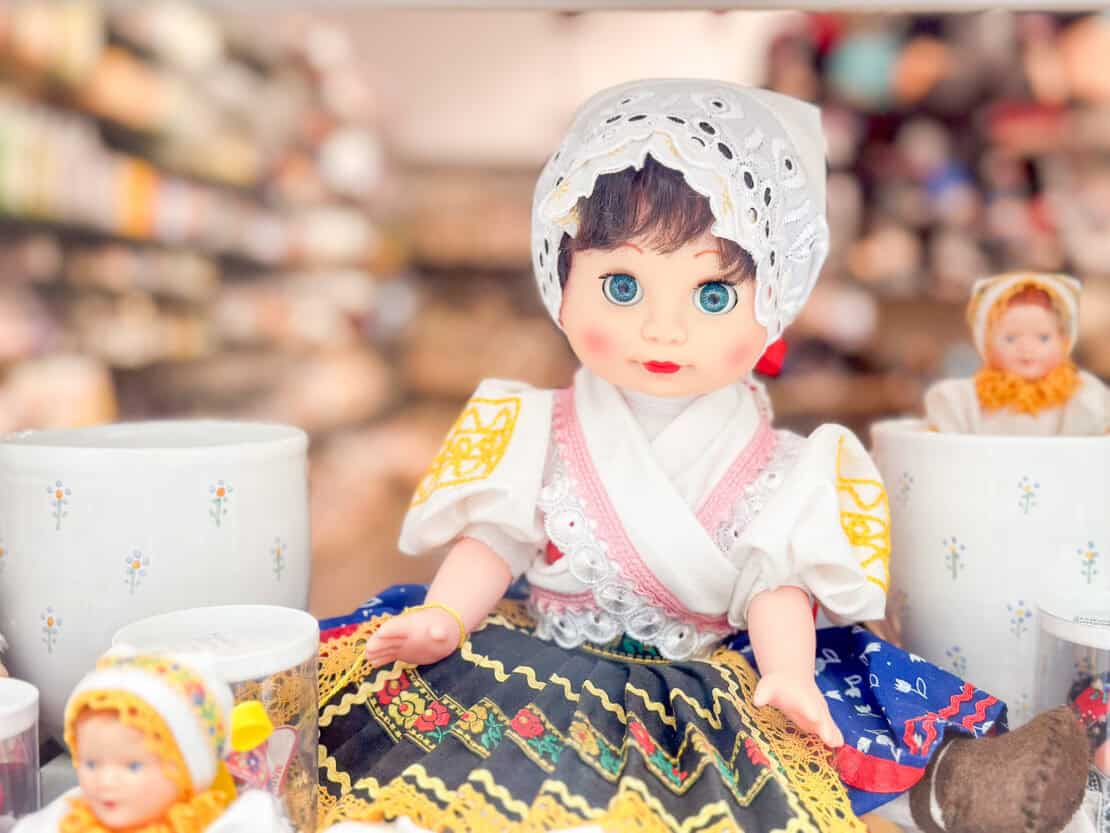
More About Travel in Central Europe
- How to spend 24 hours in Ljubljana
- How to spend two days in Budapest
- A new form of slow travel in Austria
- The stories behind the UNESCO World Heritage Wieliczka Salt Mines
- Things no one tells you about visiting Auschwitz alone
- Traditional dishes in Austria: the 15 dishes you need to try
- Why summer in Austria will make you feel better
- 15 Beautiful lakes in Austria
- The best of Lech in Summer
- Exploring the Käsestrasse, Austria’s Cheese Road
- Dark tourism in Vienna: what you need to know
- What the Viking Aegir Danube Waltz Cruise is really like
- Capital gains: exploring Europe’s longest river


